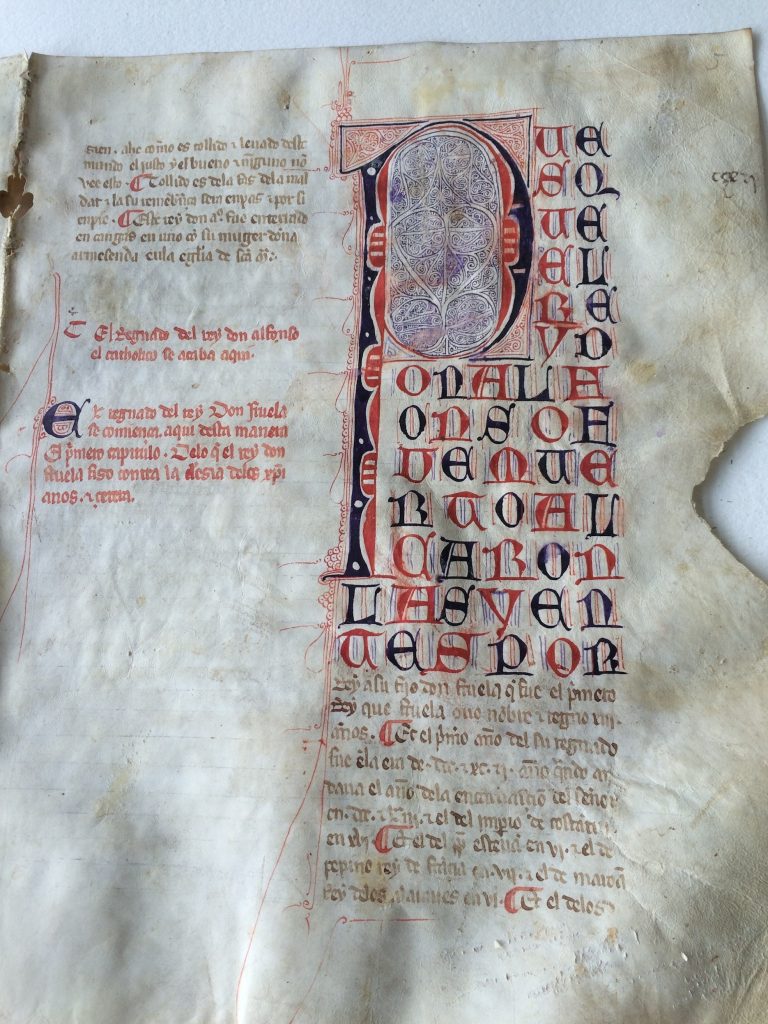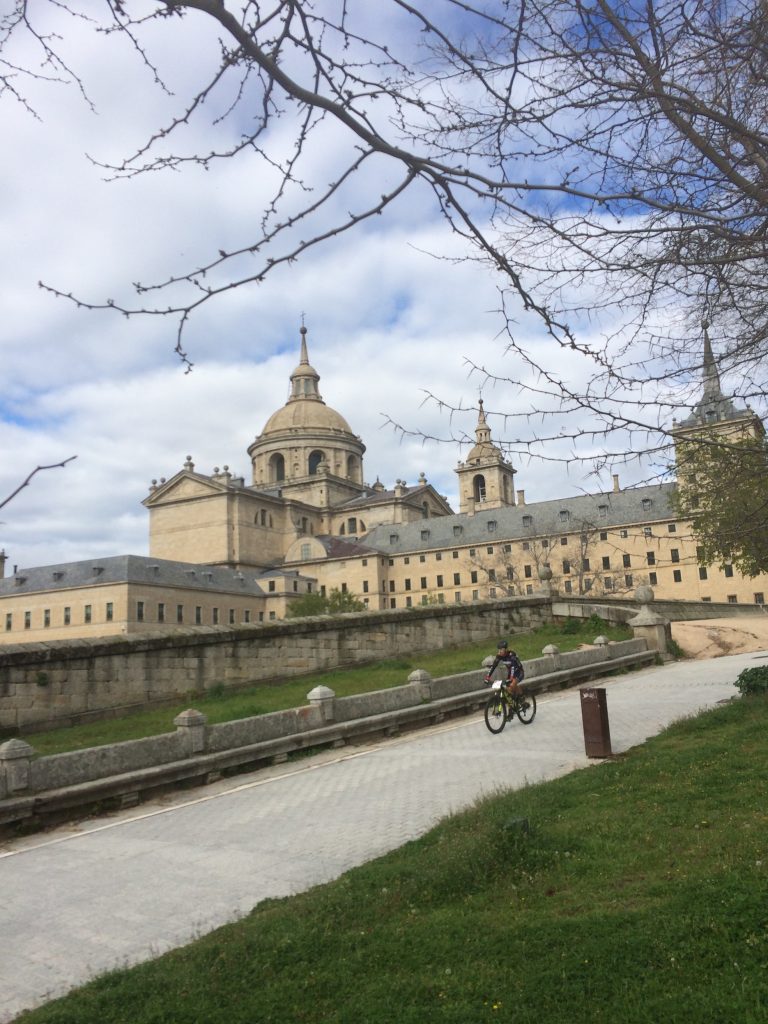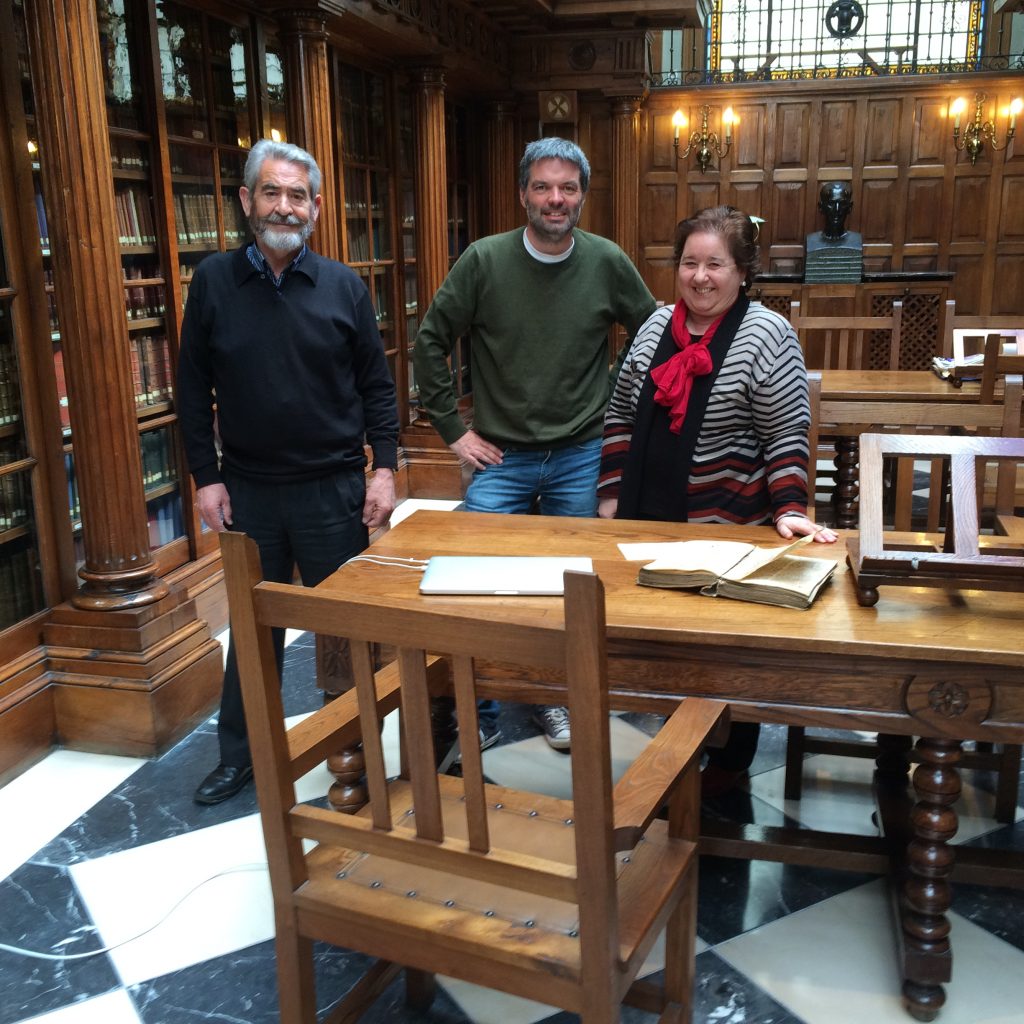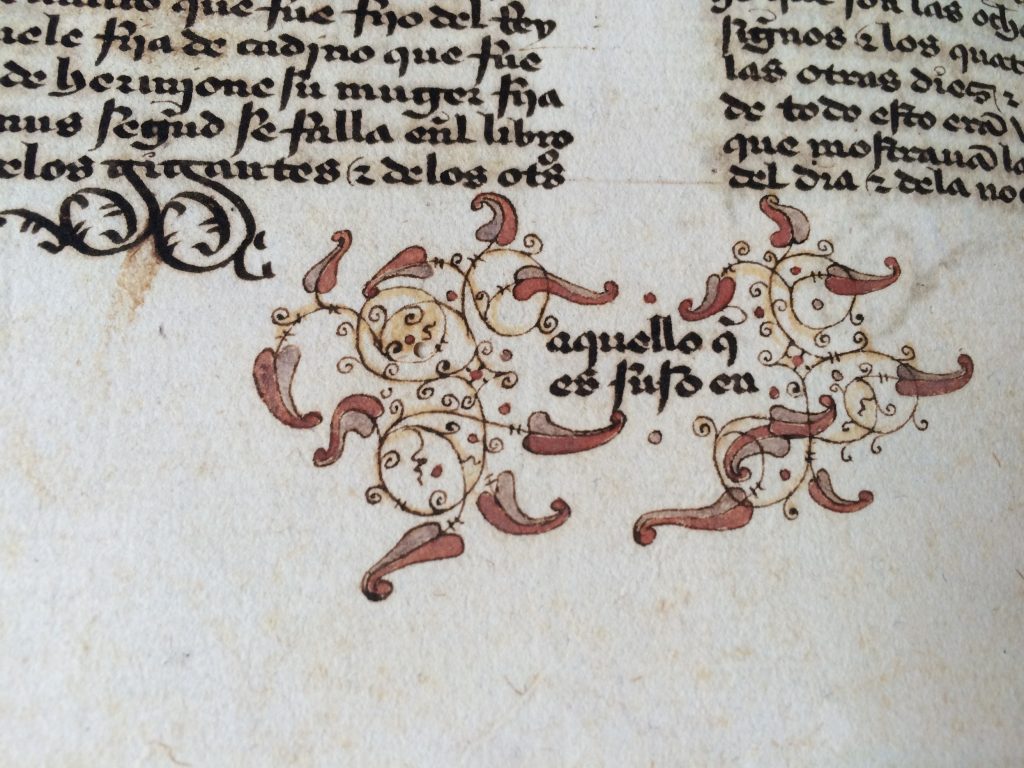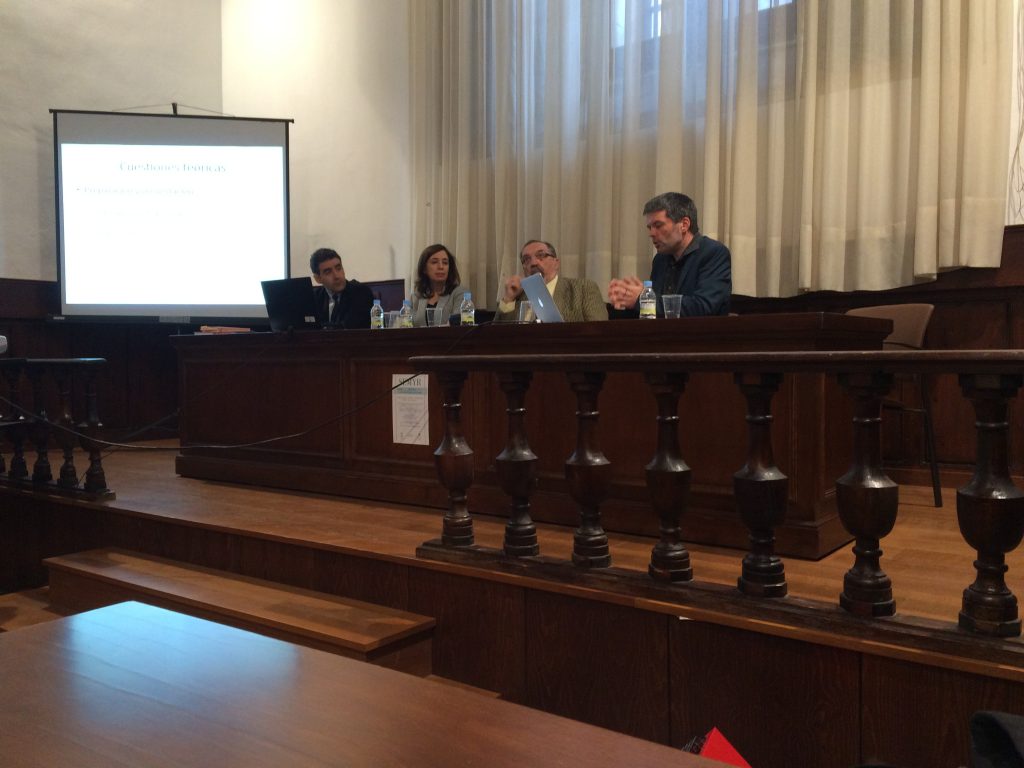Enrique and Aengus spent 10 days on a whistle stop tour of Spain at the end of April to examine manuscripts of the Estoria de Espanna and to make arrangements for our Impact activities which will take place from January 2017 onwards. Day 1 for Aengus was spent at the Instituto de Patrimonio Cultural de España and the Biblioteca Nacional de España. The Santander codex (M-550 – known as T) is currently being restored there, in anticipation of the exhibition in Santander (of which more anon). I had the pleasure of a tour of the restoration facilities in the IPCE courtesy of the marvellous director of document conservation Ana Ros. The work is proceeding in the careful hands of the two restorers Pilar Díaz Boj y Maria Sánchez Dominguez and the expert on binding Isabel Lozano de Gregori. Unfortunately we missed the chance to discuss matters codicological with the Laura Fernández who has worked in such great depth on E1 and E2, but no doubt the opportunity will present itself again in the future. Ricardo Pichel Gotérrez has already provided us with a full codicological description of T which will appear in the final version of the edition so little added work was required – I was however able to examine some of the folios in person.
On the same afternoon, I was able to spend some time in the Biblioteca Nacional examining manuscripts Q and C, both of which will appear in the Biblioteca Nacional exhibition in January. And there was still time to catch up with long-time friend of the project Alicia Montero.
The following day, Enrique and Aengus had the pleasure of examining in person the central codices of our edition: E1 and E2 at the Real Biblioteca de San Lorenzo de El Escorial.
Over the course of two Saturday mornings we were able to examine both manuscripts in some detail and sketch out a full codicological survey of the two. As is well known, E2 is more complex from this point of view than E1, which is the only Alfonsine codex of the Estoria. Nonetheless, Aengus was able to identify some significant details of manuscript damage, relationships between gatherings and scribal slip-ups while Enrique examined in some detail the complexities of E2. We were greatly aided in this, and in our negotiations with Patrimonio Nacional, with the director of what must be one of the most impressive manuscript collections in Europe by its amiable director José Luis del Valle Merino.
The focus in subsequent days turned to Impact. We were joined by Mike Pidd of the University of Sheffield’s Humanities Research Institute to discuss details of the proposed exhibition with the Biblioteca Nacional and also the implementation of teaching materials with one school in Madrid. First up was a meeting with Carlos Alberdi (Director Cultural), Gema Hernández Carralón (Jefe del Museo de la BNE), Cristina Guillén Bermejo (Sala Cervantes) and Mercedes Pasalodos Salgado of the BNE. A very fruitful agreement was reached on timings and content of the exhibition. The physical exhibition will take place in the BNE Museo between the 31st January and 14th April 2017 and the digital content to accompany it will be available from shortly before then. In addition to details about Alfonso el Sabio and the Estoria de Espanna we will provide interactive tools to enable visitors to search the Estoria in a variety of ways and also to have a go at transcribing. Further blog posts will give a better idea of how these tools will work.
While Enrique went to visit further schools, Aengus visited Santander. The aim of the digital exhibition is that is should coincide with physical exhibitions of some of the main codices of the Estoria; in addition to the Biblioteca Nacional, these will take place in the Biblioteca de Menéndez Pelayo in Santander and at the Universities of Salamanca and Minnesota at the same time.
In Santander, I was able to discuss arrangements with the ever-helpful Rosa Fernández Lera and Andrés del Rey Sayagüés whose generosity and welcome could not be matched.
We agreed that the exhibition will take place beginning in the same week as the Biblioteca Nacional (but a few days later, to permit the presence of all at the opening). It will take place in the reading room of the library (pictured above). At Andrés’s suggestion, we agreed that the display of T be accompanied by some other codices in their wonderful collection. There are a number of related historiographical and Alfonsine codices, so expect to see some of these in the Santander exhibition. Among these is a manuscript of the General Estoria which benefits from particularly ornate catchwords.
And so on to Salamanca and a meeting with the indefatigable Maragarita Becedas-González, Director of the Biblioteca General Histórica de la Universidad de Salamanca in the company of Enrique and member of the consejo científico Paco Bautista of the Universidad de Salamanca. Once more I was overwhelmed by the generosity of the welcome and the wish for collaborations. The exhibition of the three codices of the Estoria (B, CF and F – which we had the pleasure of examining in person subsequently) will take place to coincide with the others in the unique setting of the Biblioteca Histórica.
(Photo: https://bibliotecas.usal.es/node/1086/galeria)
In the course of our discussions and visit to the library, we had the privilege of being able to examine early manuscripts of the Chronicon Mundi, De Rebus Hispanie and (why not…?) the Salamanca manuscript of the Libro de Buen Amor.
The final full day was spent in Salamanca at the SEMYR seminar, led by Paco Bautista and Michel García.
Aengus and Inés Fernández-Ordóñez gave their respective views on the different ways of editing the Estoria. I was able to demonstrate the collation and editing tools we are helping to develop and these were welcomed with significant interest. A very fruitful discussion ensued – and lasted all the way back to Madrid on the train courtesy of Enrique and Inés, whose intellectual curiosity and generosity never cease to amaze. Especial thanks go to Paco Bautista, Juan Miguel Valero and to Pedro Cátedra for the invitation to speak in so prestigious a seminar and for their helpful comments.
After a final few hours in El Escorial, it was back to Birmingham. We have much work still to do on editing and Impact but the positive impression garnered over ten intense days in Spain will live long in the memory.
Especial thanks to all of those mentioned above for their help and warm welcome.

